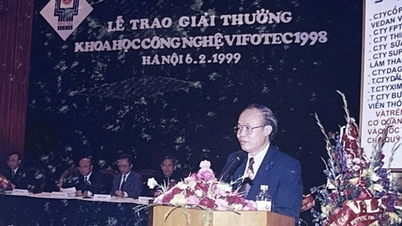 |
| Scientists have discovered a virus-inhibiting region in the HTLV-1 virus genome, and the mechanism could also apply to HIV. (Source: Science Daily) |
A research team from Kumamoto University, led by Professor Yorifumi Satou, discovered a “viral inhibitory region” located in the genome of the HTLV-1 virus.
This gene segment "recruits" transcription factors of human cells, especially the RUNX1 complex, which helps to inhibit the activity of the virus, putting it into a dormant state. Thanks to that, the virus can evade detection by the immune system for a long time.
HTLV-1 is a rare but dangerous oncogenic retrovirus that can lead to adult T-cell leukemia (ATL), an aggressive and difficult-to-treat form of cancer. Although most carriers of the virus do not show symptoms, a small percentage can develop cancer or serious immune disorders over many years.
In the experiment, when the "inhibitor" segment of HTLV-1 was removed or mutated, the virus became more active and more vulnerable to the immune system. Notably, when scientists introduced this "inhibitor" segment into HIV, they found that HIV also "calmed down" significantly - replicating less, destroying less cells, and seemingly going into a latent state of sleep.
“For the first time, we have discovered an internal mechanism by which the human leukemia virus controls its own stealth ability. This is a sophisticated evolutionary strategy, and now that we understand it, we can take advantage of it to develop treatments,” said Professor Satou.
This discovery opens up new prospects not only for treating HTLV-1 - which is circulating in areas such as southwestern Japan - but could also serve as a basis for developing strategies to control other dangerous retroviruses such as HIV.
Source: https://baoquocte.vn/chia-khoa-moi-giup-ru-ngu-virus-hiv-323183.html


![[Photo] 60th Anniversary of the Founding of the Vietnam Association of Photographic Artists](/_next/image?url=https%3A%2F%2Fvphoto.vietnam.vn%2Fthumb%2F1200x675%2Fvietnam%2Fresource%2FIMAGE%2F2025%2F12%2F05%2F1764935864512_a1-bnd-0841-9740-jpg.webp&w=3840&q=75)

![[Photo] Cat Ba - Green island paradise](/_next/image?url=https%3A%2F%2Fvphoto.vietnam.vn%2Fthumb%2F1200x675%2Fvietnam%2Fresource%2FIMAGE%2F2025%2F12%2F04%2F1764821844074_ndo_br_1-dcbthienduongxanh638-jpg.webp&w=3840&q=75)

































































































Comment (0)